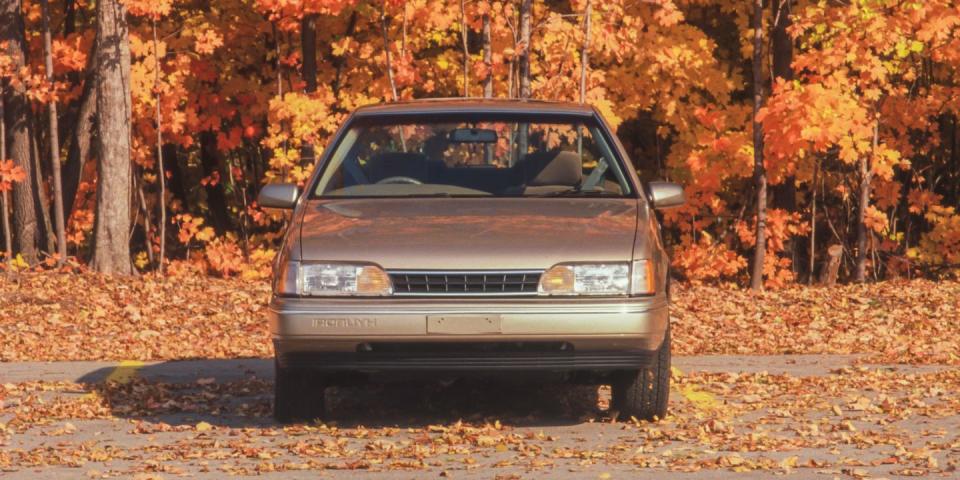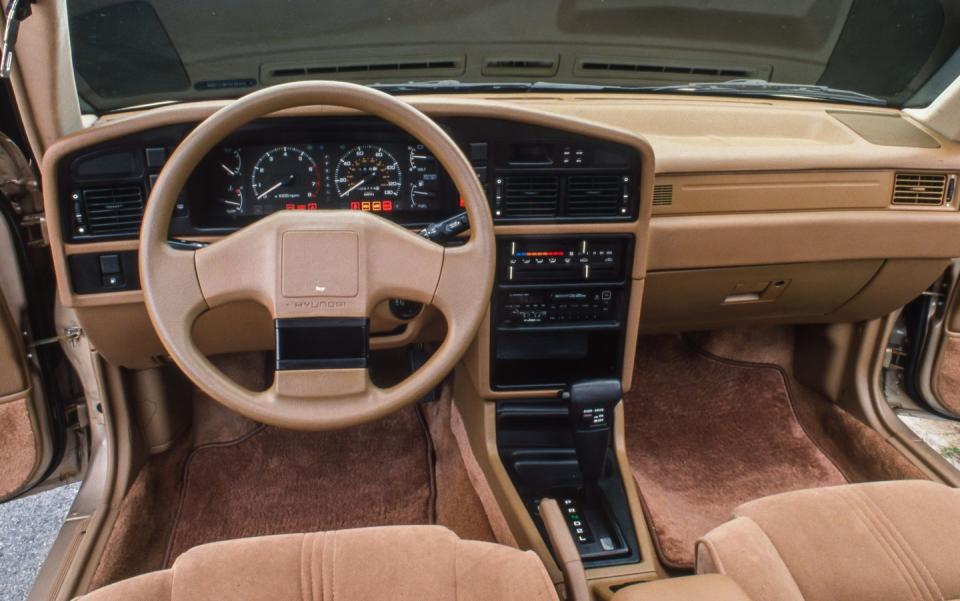Tested: 1990 Hyundai Sonata V6 Inches Closer to the Competition

From the April 1990 issue of Car and Driver.
This magazine unashamedly panders to car lust. Just name your passion. Be it come-hither styling or pulse-quickening horsepower or exotic machinery, we deliver your fix every month.
So who asked for a Hyundai Sonata, you're wondering?
It just so happens that Hyundai specializes in the single feature most wanted by the majority of new-car shoppers, more important even than sexy fenders, twin turbos, or a glut of valves. Hyundai features low price.
Low price is the thing everybody wants and nobody lusts after, which means that this limousine of the Hyundai line, the Sonata, needs to be viewed a little differently than the normal road-test candidate. After all, most folks still think of South Korea as a Third World country. Moreover, the company didn't build its first car until 1967 and didn't export to the U.S. until 1986. So nobody expects an automobile wearing the Hyundai label to be a great car. The question is, is it good enough?

That question has to be answered with another question: what's really important to you in a new car?
If you're looking for the utmost in sophistication, there are other cars of comparable size that do better, although the difference is surprisingly narrow. But if the top three items on your list are price, price, and price, the Sonata is probably unbeatable.
Hyundai offers cars of two sizes. The smaller of the two is the Excel, now in its second generation. There's not a grin in a boatload of Excels: they're specialists in cost-efficient transport.

The four-door Sonata, new last year, aspires to much more. lt's sized up into the smaller end of the intermediate range, close to the 1990 Honda Accord, about two inches longer than a Toyota Camry, about four inches shorter than a Ford Taurus. A 2.4-liter four-cylinder engine is standard. A 3.0-Iiter, 142-hp V-6 (with automatic transmission only) is optional. This size and power, along with a reasonable list of convenience options, puts the Sonata squarely in competition with the no-excuses brands.
Yet the Sonata's price is clearly lower. Exact price comparisons are difficult because of equipment variations on the base cars. But let's take the least costly four-door version of each car and add a V-6 engine, an automatic transmission, air conditioning, and destination charges. The Sonata works out to $12,464, compared with $15,468 for the Camry, $14,547 for the Taurus, $14,340 for the four-cylinder-only Accord. As you can see, the price-conscious have a good reason to consider the Sonata.

And when they do, they'll find a car that seems a whole lot closer to the others than price would suggest. Staffers of average weight and height find easy comfort in this car. In the base version, the only adjustments on the driver's seat are fore and aft and seatback angle, but nothing more is necessary. The steering column tilts. The motorized shoulder belt does its thing and you're ready to go. The Sonata is reasonably quiet on the highway: mostly you hear air rushing past the windows. The ride (if you avoid the 60-series tire option) is about normal for this class of car. The controls respond appropriately. The passenger seats are quite comfortable. In all, there's nothing significant to complain about.
In fact, a trip in the Sonata is perfectly forgettable, which is a compliment for this relative newcomer. That means no annoyances, no bad habits.
Real car guys, of course, expect more of their car than simply the absence of bother. They want accurate controls, quick responses, and the general feeling of quality. How does the Sonata do on that score?
Well, it's mostly forgettable there, too. Nothing stands out. While that's not much of a recommendation to an enthusiast, it's certainly an impressive accomplishment for a company that's been making cars for only 24 years, in a country where driving is a luxury beyond the means of most citizens.

Already the Sonata has features of special interest to some professionals. The styling is must-have stuff for bank robbers. The look is pleasing enough; it has very little bright trim, and the curves are soft, rather in the aero mode. But turn away and, "Darn, what did that car look like, anyway?" Again, the word "forgettable" comes to mind.
The instrument panel is busy territory, with more switches, buttons, and dials than you'd expect. While Honda makes the driver's compartment simple, Hyundai makes it look complicated. Our test car was equipped with a fine-sounding AM/FM/cassette system using six Polk loudspeakers, a $795 option. The radio's digital display on the dash was too faint to read in the daytime, though. And the dashboard clock was the only electronic clock we can remember that was a hopeless timekeeper: it lost about two hours a day.
While the cloth-upholstered interior is quite comfortable, the eye notices details that are a bit behind the times. The map pockets, for example, are plastic moldings attached to the door panels in the fashion of a patch rather than being integrated into the shape. Also, the console and some of the dashboard trim seem tentatively fastened.

 Yahoo Autos
Yahoo Autos 